
Webinars
Epredia Webinars
Explore upcoming live and on-demand webinars
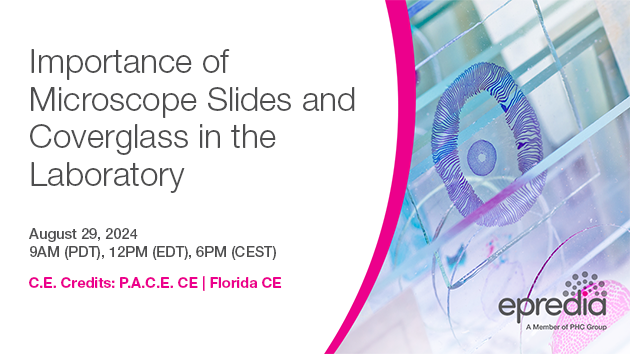
Webinars
Importance of Microscope Slides and Coverglass in the Laboratory
Learning Objectives:
- Describe glass manufacturing process.
- Explain what makes adhesion properties on slides.
- Differentiate utility of different types of slides.
- Distinguish importance of coverglass specifications.
Webinars
Introduction of Tissue Microarrays
Learning Objectives:
- Discover what a TMA is and how it is used
- Gain clarity on why and how TMA blocks are created
- Learn the difference between manual and automated TMA creation processes
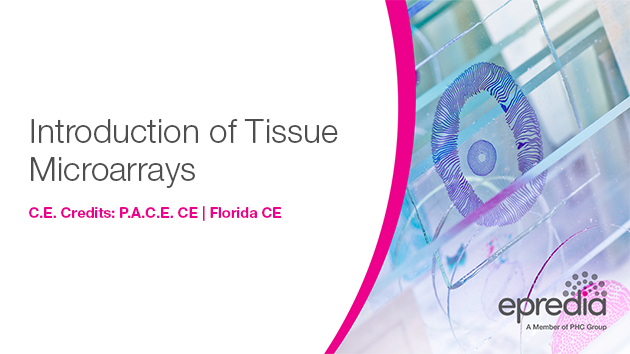
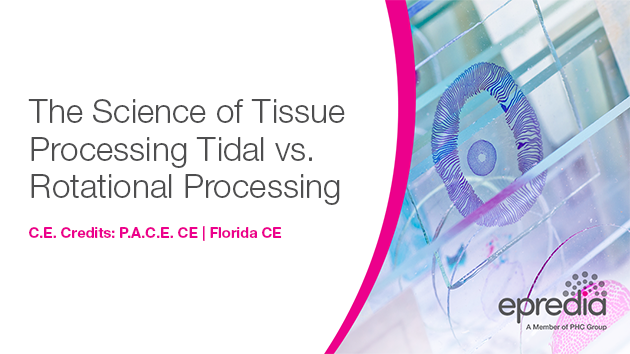
Webinars
The Science of Tissue Processing Tidal vs. Rotational Processing
Tissue processing is the foundation for producing reliable results in the Histology laboratory. As new working environments and staffing challenges emerge, it’s vital to understand how rotational tissue processing can save time and improve your laboratories tissue quality. This presentation will allow you to review the steps in tissue processing and learn how a rotational tissue processor can increase your workflow efficiency and improve the quality of your processed tissue.
Webinars
Exploring Tissue Processing Reagents
Tissue processing is the foundation for producing reliable results in the Histology laboratory.
As new working environments and staffing challenges emerge, it’s vital to understand how tissue processing reagents can save time and improve the quality of the processed tissue. This presentation will allow you to discover the differences of Epredia’s unique portfolio of reagents within the histology laboratory and the science behind them.
Epredia is dedicated to laboratory professionals, and this webinar offers an opportunity to discover, gain knowledge and contribute to educational topics that matter to you!


Webinars
Hunting unicorns: How to build a digital pathology network (The DigiPatICS experience)
Complete digital pathology transformation for primary histopathological diagnosis is a challenging yet a rewarding endeavor. Its advantages are clear with more efficient workflows, but there can be extensive technical and functional challenges as well.
The Catalan Health Institute (ICS) has started its DigiPatICS project, aiming to deploy digital pathology in an integrative, holistic, and comprehensive way within a network of 8 hospitals, over 168 pathologists, and over 1 million slides each year.
In the webinar we will describe the bidding process and the careful planning that was required, followed by swift implementation in stages. The purpose of the DigiPatICS project is to increase patient safety and quality of care, improving diagnosis and the efficiency of processes in the pathological anatomy departments of the ICS through process improvement, digital pathology, and artificial intelligence tools.
Webinars
On Demand Webinar: Generating Flawless Slides for Digital Pathology
Having trouble with your slides? Spending too much time on staining and preparation? We have a solution to help you save time and get the slides you want. With Digital Pathology growing in research, clinical and pharma labs there has been a need for education on how to prep so that you can achieve exceptional scans.


Webinars
On Demand Webinar: Exploring the H in H&E Staining - Working Together to Enhance Your Workflow
An introduction to H&E staining and the workflow.
Hematoxylin and Eosin (H&E) staining is deeply engrained into the practice of histology, but how much do you know about the “H” in H&E? In this webinar, we will explore the history and formulations of hematoxylin with a veteran of histology with over 30 years of experience, Joan Vesey, HT ASCP from Kalamazoo, MI. You will also discover how Epredia’s Signature Series H&E stains are uniquely formulated to achieve crisp, clear stains time and time again with Stacie Jackson, Global Market Development Manager – Staining and Coverslipping at Epredia.
Webinars
On Demand Webinar: Digital Pathology Solutions for Remote Clinical Use in the Era of COVID-19
The COVID-19 situation has not surprisingly, posed challenges for clinical diagnostic workflows in the United States. However, an opportunity for digital pathology solutions to enable remote workflow situations is now possible, thanks to the FDA’s recent guidance to temporarily allow solutions that have not received clearance through the 510(K) process. What exactly is the FDA’s guidance and how could a remote workflow even be possible? Learn more in this informative webinar, along with a new 3DHISTECH digital pathology solution from Epredia.
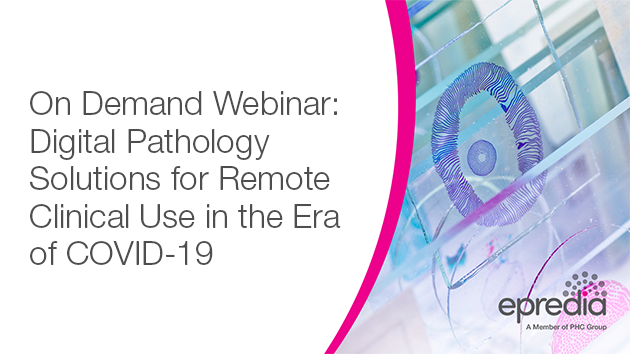
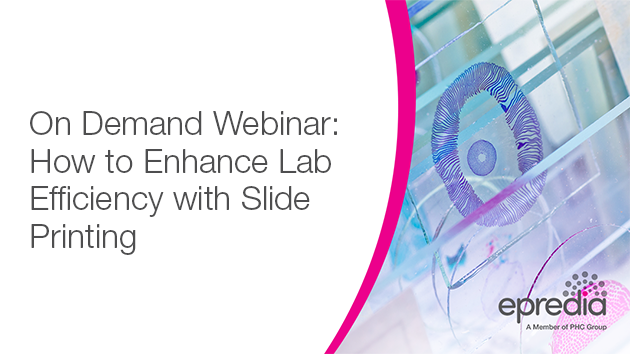
Webinars
On Demand Webinar: How to Enhance Lab Efficiency with Slide Printing
For labs large or small, clinical or research-based, efficiency is paramount. It directly impacts diagnostic results as well as the integrity of research validation. Boosting efficiency starts with reducing human error, and one of the most impactful ways to do this is by doing away with the outdated practice of hand labeling slides. In this webinar, you will discover how modern slide printers use intelligent slide selection to automatically read requested slide type and pull from the appropriate hopper, taking the guesswork out of slide labeling and saving labs and staff precious time while simultaneously enhancing patient safety and data integrity. You will also learn more about the Epredia slide and printing family of solutions and get a first look at our latest, most adaptable slide printer, the SlideMate Pro.
This product is not available in all regions. Please reach out to your local sales representative for more information.